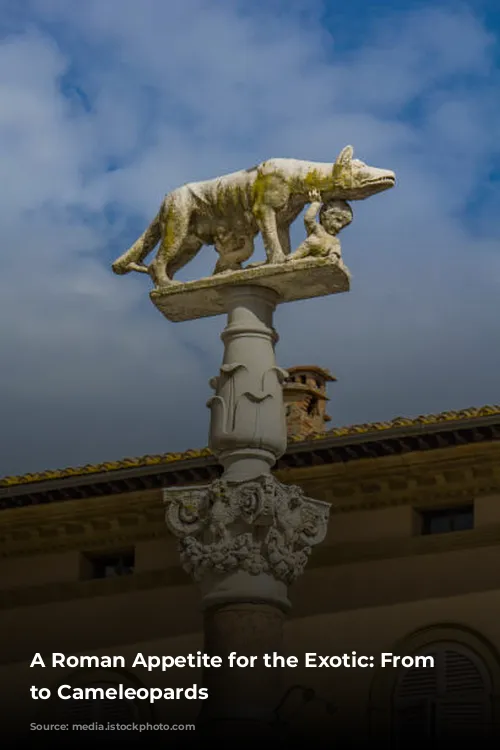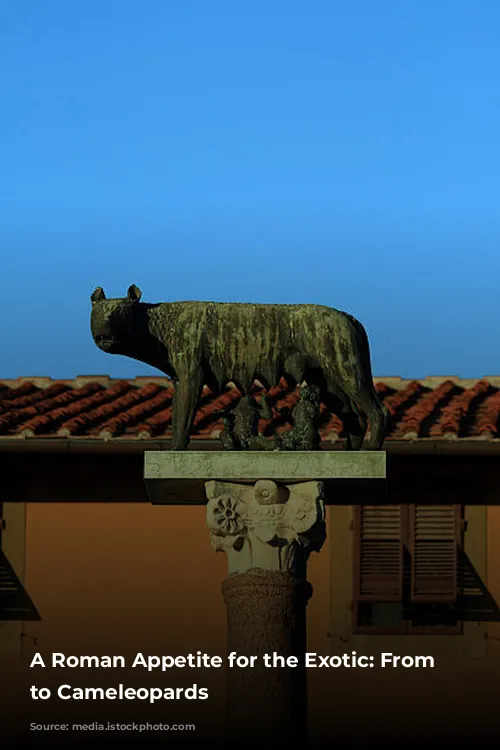Did you know that ancient Romans were obsessed with exotic animals? They weren’t just content with seeing the same old horses and dogs. They craved the strange and unusual, and would go to great lengths to acquire and display these fascinating creatures.
The Triumph of the Uncommon
From the very beginning, Rome’s fascination with exotic animals was about showcasing the unusual. Pliny the Elder, a Roman writer and natural historian, documented the first appearances of many animals in Rome, starting with elephants.
These massive creatures weren’t just brought in for display; they were trained to perform incredible feats. Imagine the awe of the crowd as elephants danced with awkward grace, fired arrows with deadly accuracy, and even walked on tightropes! One elephant, known for its slow learning, was even found studying its lessons at night! Can you imagine?
Pliny also tells us of an elephant that could trace the Greek alphabet and even write a message in that language. Imagine the intellect and skill needed to train such a creature!
It seems these animals weren’t just objects of wonder, but they were also respected for their intelligence. And while they were often trained to perform, Rome’s obsession with showcasing the unusual extended far beyond elephants.
From Lions to Tigers
Lions, panthers, and even tigers were sought after and exhibited with enthusiasm. Imagine the roar of a hundred lions in the arena! It’s no wonder these animals became symbols of power and prestige in Roman society.
The Romans were so hungry for the exotic that they even passed laws to allow the import of animals from Africa, despite earlier restrictions. Can you imagine the excitement when the first parti-coloured panthers arrived in Rome?
And the first tame tiger to grace a Roman stage? The crowd must have been mesmerized! Just imagine the thrill of seeing such a magnificent beast in person.
Beyond the Familiar
The Romans’ fascination with exotic animals extended to creatures that were completely unknown to them. They were captivated by the cameleopard (what we know today as a giraffe), which was first seen during Caesar’s reign. This animal was so unique that it was dubbed “wild sheep” because of its unusual appearance and lack of aggression.
There was also the chama, a wolf-like animal with the spots of a leopard, which was brought to Rome by Pompey the Great. The Romans were even intrigued by animals from Ethiopia called chepoi, which had human-like feet and hands.
But perhaps the most fascinating of these exotic creatures was the rhinoceros. This beast, with its single horn and tough hide, was a natural enemy of the elephant and was highly sought after by the Romans. They were captivated by its strength and uniqueness.
The Enduring Legacy
From the majestic elephant to the fierce rhinoceros, the ancient Romans were truly obsessed with showcasing the extraordinary. Their fascination with exotic animals reflects their love for the unusual and their desire to push the boundaries of the known world. Even today, we are captivated by the stories of these animals and the lengths to which the Romans went to bring them to their city. Their legacy lives on in the zoos and wildlife sanctuaries of the modern world, where we continue to marvel at the diversity and wonder of the natural world.













